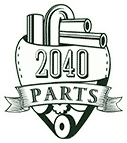Icon Vehicle Dynamics 15-up F150 Tubular Uca Kit on 2040-parts.com
United States, United States
Lift Kits & Parts for Sale
 Icon vehicle dynamics 01-up gm hd 0-1" rear 2.5 vs pb / 07-up gm 1500 4" rear 2.(US $1,103.22)
Icon vehicle dynamics 01-up gm hd 0-1" rear 2.5 vs pb / 07-up gm 1500 4" rear 2.(US $1,103.22) Daystar papls612 premium lift system fits 10-12 2500 3500 ram 2500(US $625.78)
Daystar papls612 premium lift system fits 10-12 2500 3500 ram 2500(US $625.78) Daystar pa993 body lift kit fits 12-16 wrangler (jk)(US $97.93)
Daystar pa993 body lift kit fits 12-16 wrangler (jk)(US $97.93) Readylift 69-6401 sst lift kit w/shocks fits 07-16 wrangler (jk)(US $799.95)
Readylift 69-6401 sst lift kit w/shocks fits 07-16 wrangler (jk)(US $799.95) Ford ranger 4" spindle lift (torison bar model only)(US $200.00)
Ford ranger 4" spindle lift (torison bar model only)(US $200.00) Jeep jk rubicon oem trackbar 07-16(US $24.99)
Jeep jk rubicon oem trackbar 07-16(US $24.99)
Ford to unveil 'solar powered' hybrid car
Thu, 02 Jan 2014FORD IS to unveil a solar-powered concept car capable of 100 miles per gallon that offers the same performance as a plug-in hybrid - but without the need for a plug. The C-MAX Solar Energi Concept car, which will be revealed at this month's International CES gadget show in Las Vegas, uses a petrol engine combined with a gizmo that acts like a magnifying glass to concentrate the sun's rays on the vehicle's roof-mounted solar panels. Ford says the vehicle's estimated combined mileage is 100 miles per gallon.
Defending an old-school Land Rover
Mon, 15 Oct 2012I don't know how to respond today after seeing on our very own homepage that the Land Rover people will bring the successor of its beloved Defender to the United States market. The Defender is a vehicle about which “lust” is an insufficiently weak noun or verb; current and vintage Defenders elicit something beyond an emotive response. They are visceral.
Worth a read: Wired's 'Why Getting It Wrong Is the Future of Design'
Thu, 25 Sep 2014Wired has just published a series of short articles entitled 13 Lessons for Design's New Golden Age. While there are some interesting examples cited in the piece, the concluding article, ‘Why Getting It Wrong Is the Future of Design' by the former creative director of Wired magazine, Scott Dadich, feels like it has particular resonance for car design. Dadich's Wrong Theory uses disruptive examples from the world of art, plus his own experience of working at Wired, to explain how design goes through phases: establishing a direction, creating a set of rules that define that direction and finally someone who dares to break from that direction.


